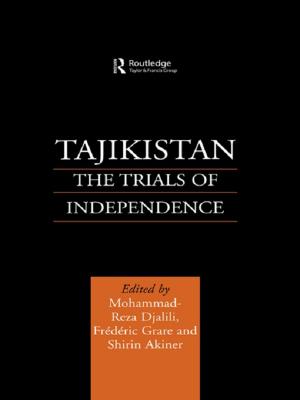Hong Kong from Britain to China
Political Cleavages, Electoral Dynamics and Institutional Changes
Nonfiction, Social & Cultural Studies, Political Science| Author: | Li Pang-Kwong | ISBN: | 9781351792059 |
| Publisher: | Taylor and Francis | Publication: | February 5, 2018 |
| Imprint: | Routledge | Language: | English |
| Author: | Li Pang-Kwong |
| ISBN: | 9781351792059 |
| Publisher: | Taylor and Francis |
| Publication: | February 5, 2018 |
| Imprint: | Routledge |
| Language: | English |
This title was first published in 2000: The Sino-British joint declaration in 1985 had called to the end of British rule in Hong Kong, but the impacts of the agreed introduction of popular election during the transitional period have still not fully emerged. Being granted Hong Kong people governing Hong Kong by China after 1997, Hong Kong people are suddenly exposed to the kind of politics that they were not engaged in before. The transitional politics is further complicated by the fact that the majority of Hong Kong voters supported the democrats, whose political value and orientation differed from that of the Beijing government. In order to comprehend the collective behaviour of the Hong Kong voters, the author first traces the development of the Hong Kong state and put his readers into context of Hong Kong electoral politics. By adopting the cleavage approach in explaining the voters’ choice and the election results since the 1990, the author examines whether the existing institutional arrangements as established by the Basic law is capable of solving the political and electoral conflicts of the days.
This title was first published in 2000: The Sino-British joint declaration in 1985 had called to the end of British rule in Hong Kong, but the impacts of the agreed introduction of popular election during the transitional period have still not fully emerged. Being granted Hong Kong people governing Hong Kong by China after 1997, Hong Kong people are suddenly exposed to the kind of politics that they were not engaged in before. The transitional politics is further complicated by the fact that the majority of Hong Kong voters supported the democrats, whose political value and orientation differed from that of the Beijing government. In order to comprehend the collective behaviour of the Hong Kong voters, the author first traces the development of the Hong Kong state and put his readers into context of Hong Kong electoral politics. By adopting the cleavage approach in explaining the voters’ choice and the election results since the 1990, the author examines whether the existing institutional arrangements as established by the Basic law is capable of solving the political and electoral conflicts of the days.















